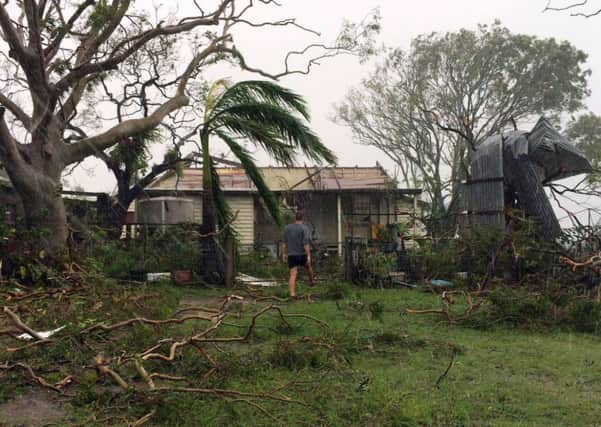Chaos as Australia battered by ‘cyclone sandwich’


The twin storms, dubbed the “cyclone sandwich” by locals, struck within hours of each other, about 1,500 miles apart.
Cyclone Lam hit a sparsely populated stretch of the Northern Territory, while the more powerful and potentially dangerous Marcia crossed over small towns along the east coast of Queensland, packing wind gusts up to 180mph.
Advertisement
Hide AdAdvertisement
Hide AdDespite the storms’ ferocious winds and drenching rains, no injuries were reported, and both systems were steadily weakening as they moved over land.
“We are very, very thankful that we have avoided the worst of what could have been an absolute catastrophe,” Queensland premier Annastacia Palaszczuk said.
Marcia was originally predicted to be relatively weak, but it grew in strength at an alarming rate late on Thursday into a menacing Category 5 storm – the most powerful form of cyclone in Australia.
Its rapid growth prompted Queensland police commissioner Ian Stewart to warn: “This is going to be a calamity, there’s absolutely no doubt about that.”
About 30,000 people living in and around the Queensland town of Yeppoon – 400 miles north of state capital Brisbane – were initially expected to experience the worst of the storm, and nearly 900 residents in low-lying areas were told to evacuate. But a slight change in the cyclone’s path spared the town the most ferocious winds, and it steadily weakened as it headed south towards Rockhampton, home to about 80,000 people.
Yeppoon resident John McGrath, who rode out the storm with his family in their house just 100 metres from the beach, watched as the roof of his neighbour’s home peeled off, flew through the air and landed across the road.
Mr McGrath, his wife and their two children, Emma, six, and Michael, four, dragged cushions and mattresses into a bathroom at the back of the house and huddled there for several terrifying hours as the walls shook and water seeped through the windows.
When they emerged to survey the damage, they were relieved to find their house largely spared, apart from a couple broken windows.
Advertisement
Hide AdAdvertisement
Hide Ad“The house is intact and everyone’s healthy and well, so I can’t complain,” he said. “It was just intense, absolutely intense.”
Across Yeppoon, the ground was cluttered with ripped-off roofs, twisted trees and awnings torn from shopfronts.
Officials had earlier pleaded with hardened Queensland residents – no strangers to violent cyclones – to take the storm seriously. A cyclone of similar strength, Yasi, hit the state in 2011, destroying scores of homes but causing no deaths.
Some 90,000 sandbags were handed out across Brisbane, because of predictions of heavy rain and flooding.
Describing the latest cyclone as “very serious”, prime minister Tony Abbott said: “Let’s hope we can get through it without any loss of life.”
More than 30,000 Queensland homes were without power yesterday, an unknown number of houses had been damaged and many roads were flooded, Ms Palaszczuk said.
But early reports of the storm’s impacts were “quite encouraging,” she added.
In the Northern Territory, Cyclone Lam struck a remote stretch of coast, tearing up trees and bringing down power lines but causing no widespread damage as it fizzled out and moved inland.